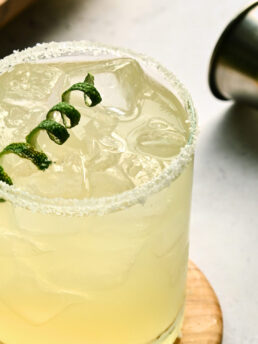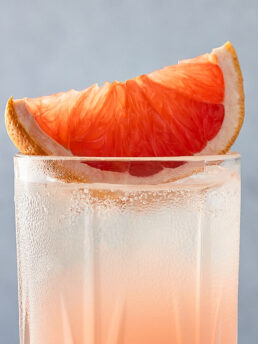Spicy Pineapple Margarita
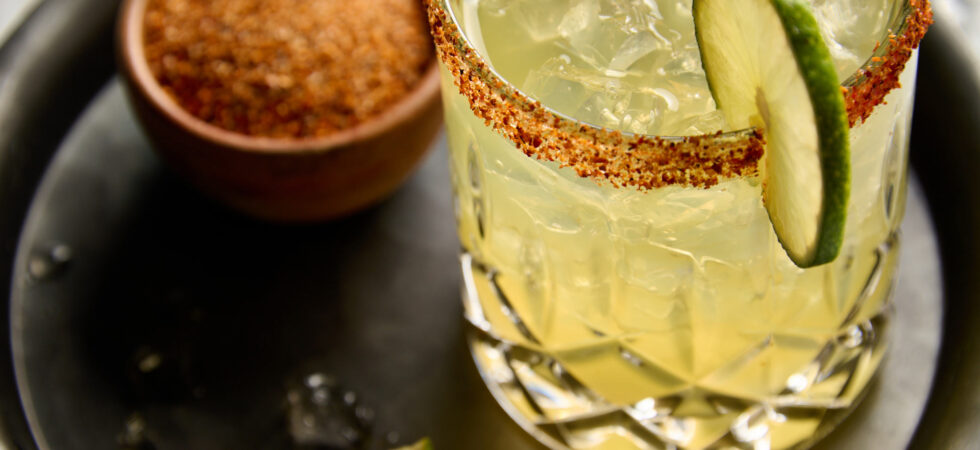
Looking for a tropical Margarita? Look no further. This Spicy Pineapple Margarita is the perfect summer sipper. With an easy, overnight-rested syrup and poblano liqueur, it has that perfect sweet heat nuance.
Sometimes, a classic margarita just won’t cut it, am I right?
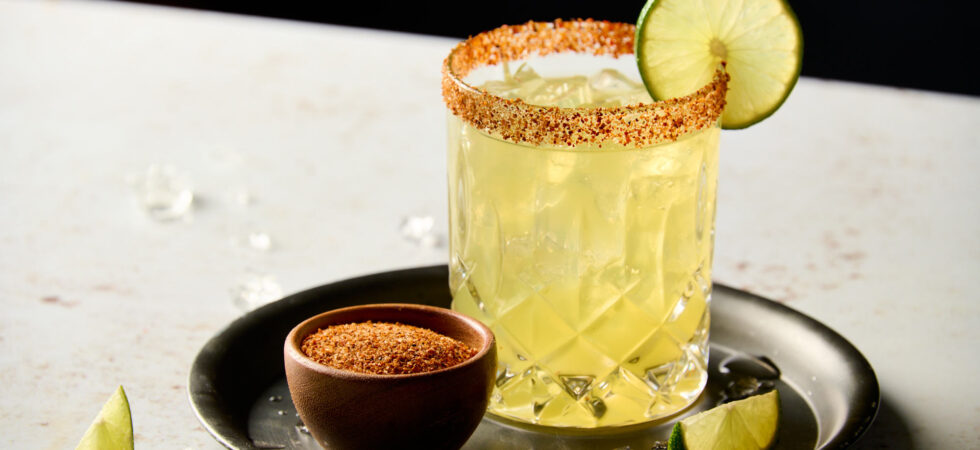
Get the Recipe: Spicy Pineapple Margarita
Ingredients
Tropical Pineapple Syrup
- ¼ cup fresh pineapple
- 1x1in piece of fresh ginger, minced
- 2 (large) lemongrass stalks (25g), grated and sliced
- peels from 2½ limes (15g)
- peels from ¼ orange (5g)
- ⅔ cup granulated sugar
- ⅛ teaspoon kosher salt
Tropical Pineapple, Poblano Margarita
- 2 oz Tres Agaves reposado tequila
- ½ oz Ancho Reyes, poblano liqueur
- 1 oz tropical pineapple syrup
- 1 oz fresh lime juice
- 2 dashes Scrappy's orange bitters
- kosher salt or tajín, (optional rim)
Equipment
- 1 kitchen scale
- 1 cutting board
- 1 spoon
- 1 chef knife
- 1 fine grater or microplane
- 1 y-peeler
- measuring Cups
- Measuring spoons
- 1 bowl or food saver bag
- 1 Fine Mesh Strainer
- 1 citrus juicer or reamer (optional)
- 1 cocktail shaker
- 1 cocktail glass
Instructions
- Of Note: Make the syrup a day in advance of making the margarita. I also recommend a kitchen scale, because a lot of this is ratioed by weight and not all spices/fruits are the same size.
Tropical Pineapple Syrup
- For the syrup, take out a bowl or food saver bag and add each ingredient as you go along. First, chop up some fresh pineapple into chunks. Then use the edge of a spoon to peel back the skin of the ginger until you have a good sized piece exposed. Chop off the section and mince it up.
- Next, peel off the top 1-2 layers of the lemongrass. Then, lay it down on your cutting board and bang the back of your knife blade along the stalk, to release it's oils. From there, chop off the woody end where the root was, toss it, and grate the remaining stalk until you hit leaves that are too soft to grate. Chop the rest, on the bias, into thin slices. Repeat if necessary until you have the correct weight.
- Now, gently peel the limes and orange with a y-peeler leaving as much pith behind as possible.
- Once those ingredients are in your bowl or bag, add the sugar and mix gently until the sugar becomes sandy in texture. Then, leave it on the counter or in your refrigerator overnight, mixing and gently mashing every few hours to make sure the sugar is uniformly coating and breaking everything down. The next day, strain the syrup through a fine mesh strainer, into a lidded container, and keep it chilled until you are ready to make the margarita.
Spicy Pineapple Margarita
- About 15-30 minutes before you make the margarita rim your rocks glass with salt or tajín (optional) and place it into the freezer to chill.
- Then, juice the lime(s) and measure out all of your ingredients. Pour everything into an empty shaker. Add whole ice cubes, close, and shake for 30-45 seconds.
- Strain over fresh ice into the chilled rocks glass. Garnish with a lime slice or peel.
Notes
- The smaller you mince the ginger, the more prevalent that flavor will be in the syrup.
- If you want the lemongrass flavor to come through stronger, only use the grated and not sliced pieces. This means more stalks will probably be needed. Save the leftover stalk tops for soups, stews, and stir-frys.
- The tropical syrup recipe makes between 3-4oz and lasts up to 3 weeks in your refrigerator.
- If you only want to use pineapple for the syrup it’s a 1:1 ratio of fruit to sugar by weight.
- If you use crushed ice in this cocktail it will water the whole thing down. The larger the ice cube(s) you use when shaking, the less surface area there is to melt and dilute your drink. Typically only very alcohol forward cocktails, like mint juleps use crushed ice.
Nutrition
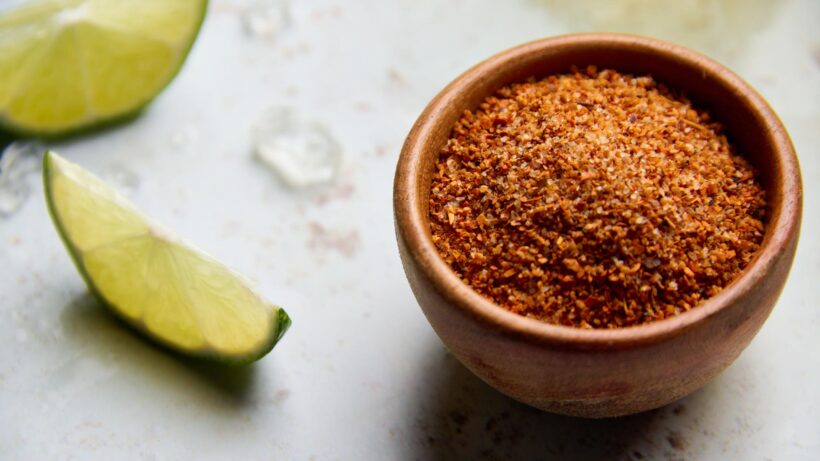
Frequently Asked Questions
According to Difford’s guide to tequila, there are 7 categories of tequila. The first 5 categories relate to aging.
1. Blanco tequila typically rests for less than 2 months in stainless steel tanks before bottling.
2. Joven tequila, is a mix of blanco and reposado tequilas.
3. Reposado, or “rested” tequila, ages in oak casks for at least 60 days and up to 1 year.
4. Añejo “old” tequilas age in oak casks for between 1-3 years.
5. Extra añejo tequilas (you get the naming by now), age in oak casks for at least 3 years.
The last two categories focus less on aging and more on filtering and flavor.
1. Curados are essentially infused tequilas, which have become considerably more prevalent in the last 2 years.
2. Cristalinos are tequilas filtered with charcoal to make them (you guessed it!) crystal clear.
For this tropical cocktail I recommend using a reposado tequila. Reposado tequilas are going to have some additional flavorings from the oak barrels they rested in, like caramel, vanilla, and oak. All of those extras are going to blend really well with the pineapple syrup.
I honestly think you can use any reposado for this cocktail. Citrus and herbal forward tequilas pair well with the poblano and aromatic elements (ginger, citrus, and lemongrass). While, sweet and peppery tequilas will blend in with the pineapple.
You can probably use a blanco tequila as well, though they tend to have a cleaner taste. Blancos are typically herbal forward with notes of citrus, pepper, stone-fruit, and honey, so you lose the caramel and oak bridge connecting the other elements in the cocktail. It would still be good, but the poblano liqueur and lime will be very punchy.
If you’d like a salted or tajín rim, before chilling the cocktail, pour some kosher salt onto a flat plate. Ring the glass with a cut lime to deposit lime juice. Then, tilt the plate to gather the salt to one side and gently dip the edge of the glass into the salt. Turn the glass until you cover all of the moistened surface with salt.
If you want a picture perfect, fully salted salted rim, dip or paint the rim with a thin layer of agave syrup. Then rotate the glass into the salt/tajín as directed above.
Of Note: Trying to rim the glass after it’s been chilled will take too much time and reheat the glass. And, as the glass reheats, moisture (that’s not sticky) will collect and stop the salt/tajín from sticking.

